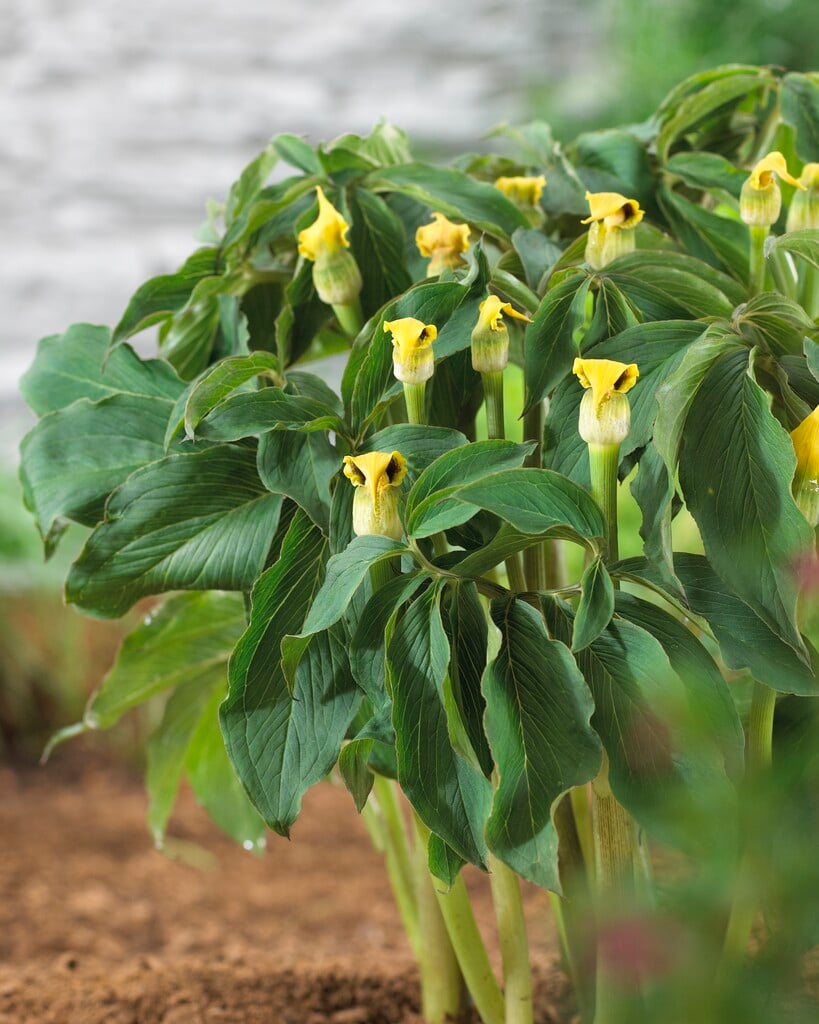Arisaema flavum
yellow cobra lily
A tuberous perennial, to about 40cm. Leaves and flowers both emerge in early summer. Leaves are lobed and dark green. Flowers consist of a bright yellow hooded spathe which has a dark purple blotch inside, surrounding a bright yellow spadix. Flowers throughout June and July
Size
Ultimate height
0.1–0.5 metresTime to ultimate height
5–10 yearsUltimate spread
0.1–0.5 metresGrowing conditions
Moisture
Moist but well–drainedpH
Acid, NeutralColour & scent
| Stem | Flower | Foliage | Fruit | |
| Spring | ||||
|---|---|---|---|---|
| Summer | Yellow Purple | Green | ||
| Autumn | Green | |||
| Winter |
Position
- Partial shade
Aspect
East–facing or North–facing or West–facing
Exposure
Sheltered Hardiness
H6Botanical details
- Family
- Araceae
- Native to GB / Ireland
- No
- Foliage
- Deciduous
- Habit
- Columnar upright
- Potentially harmful
- Humans/Pets: Harmful if eaten, skin/eye irritant. Wear gloves and other protective equipment when handling For further information and contact numbers regarding pets, see the HTA guide to potentially harmful plants
- Genus
Arisaema are mostly tuberous perennials usually with palmately lobed leaves, and distinctive tubular, hooded spathes within which the tiny true flowers are clustered at the base of the club-like or filamentous spadix, followed by a spike of red berries
- Name status
Correct
- Plant range
- NE Tropical Africa to S China
How to grow
Cultivation
Plant the tubers 20cm deep in winter or spring, into moist but well-drained, humus-rich soil in a cool, partially shaded site. In colder regions it may need winter protection, mulch with well-rotted leaf mould for insulation. Tubers must not dry out while dormant but avoid excessive winter wet.
Propagation
Propagate by seed sown in containers in a cold frame in autumn or spring. Offsets may be removed in late summer
Suggested planting locations and garden types
- Cottage and informal garden
- Patio and container plants
- City and courtyard gardens
- Underplanting of roses and shrubs
- Flower borders and beds
Pruning
No pruning required
Pests
May be susceptible to slugs and vine weevil
Diseases
Generally disease-free
Get involved
The Royal Horticultural Society is the UK’s leading gardening charity. We aim to enrich everyone’s life through plants, and make the UK a greener and more beautiful place.
